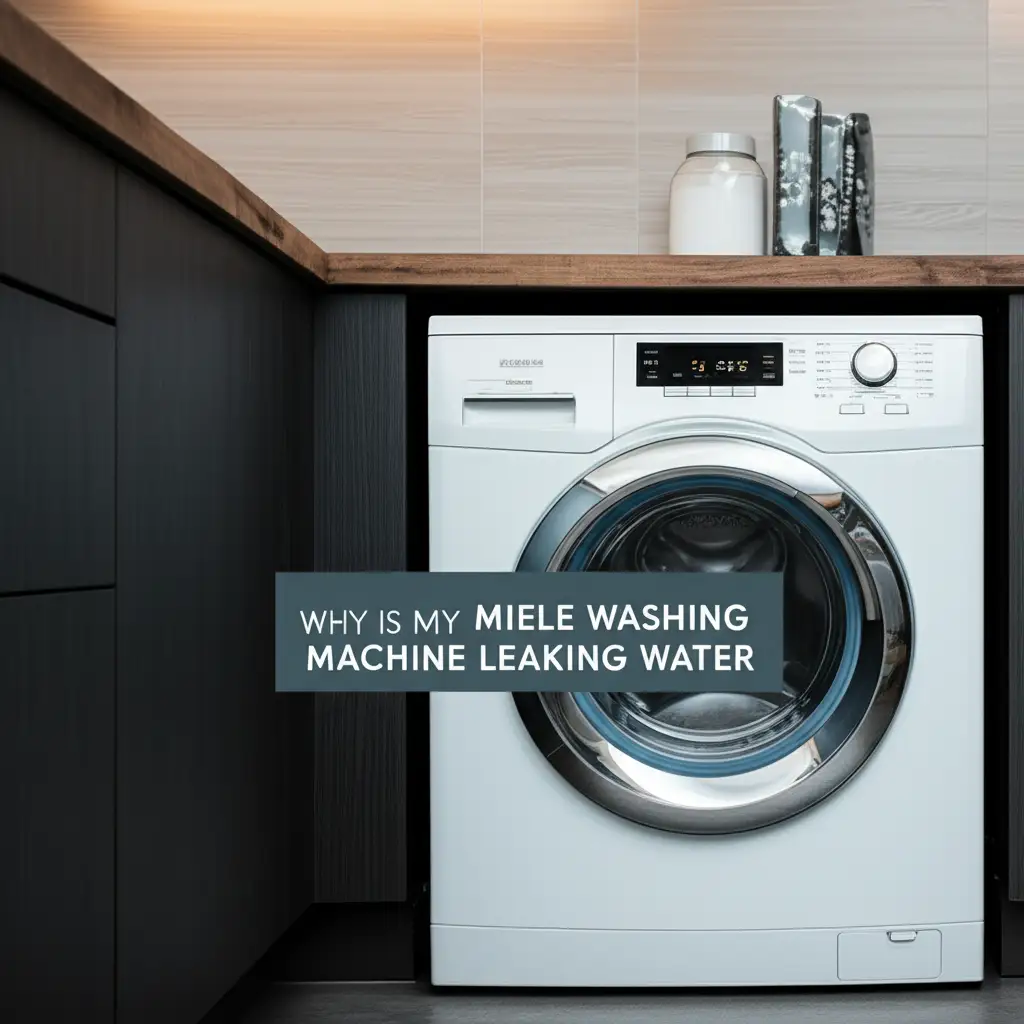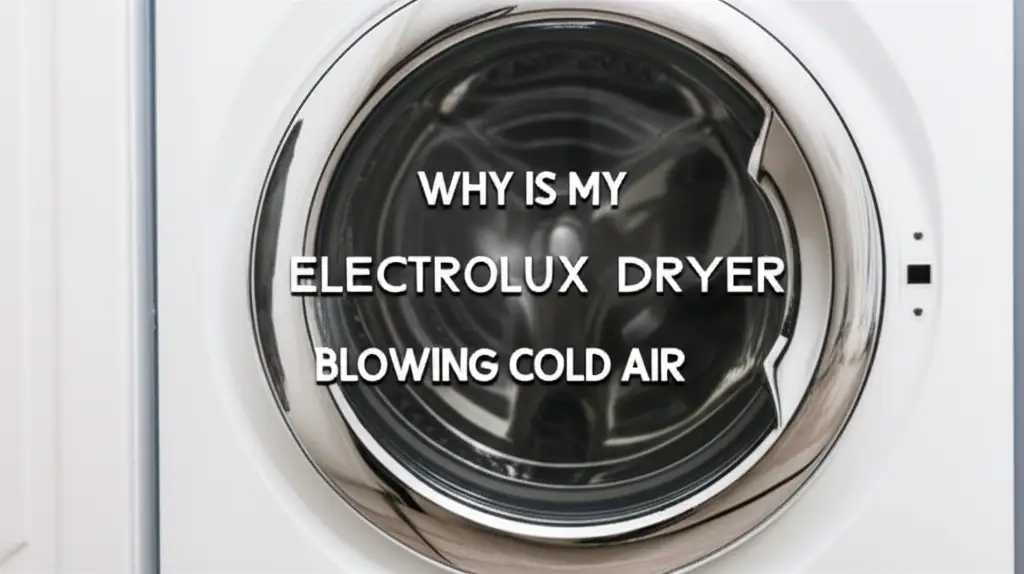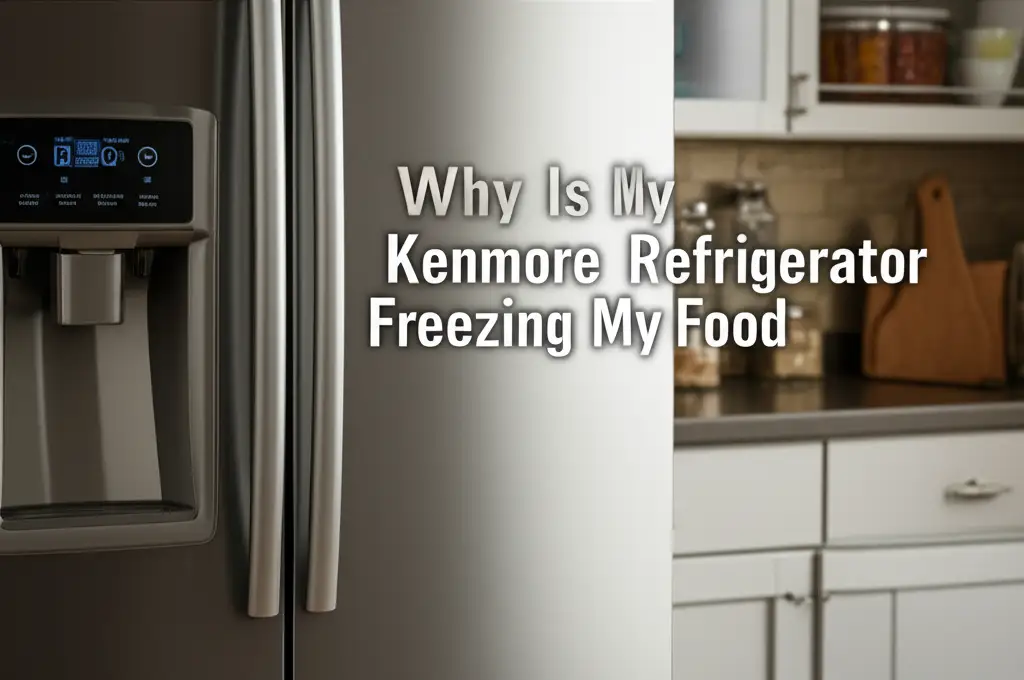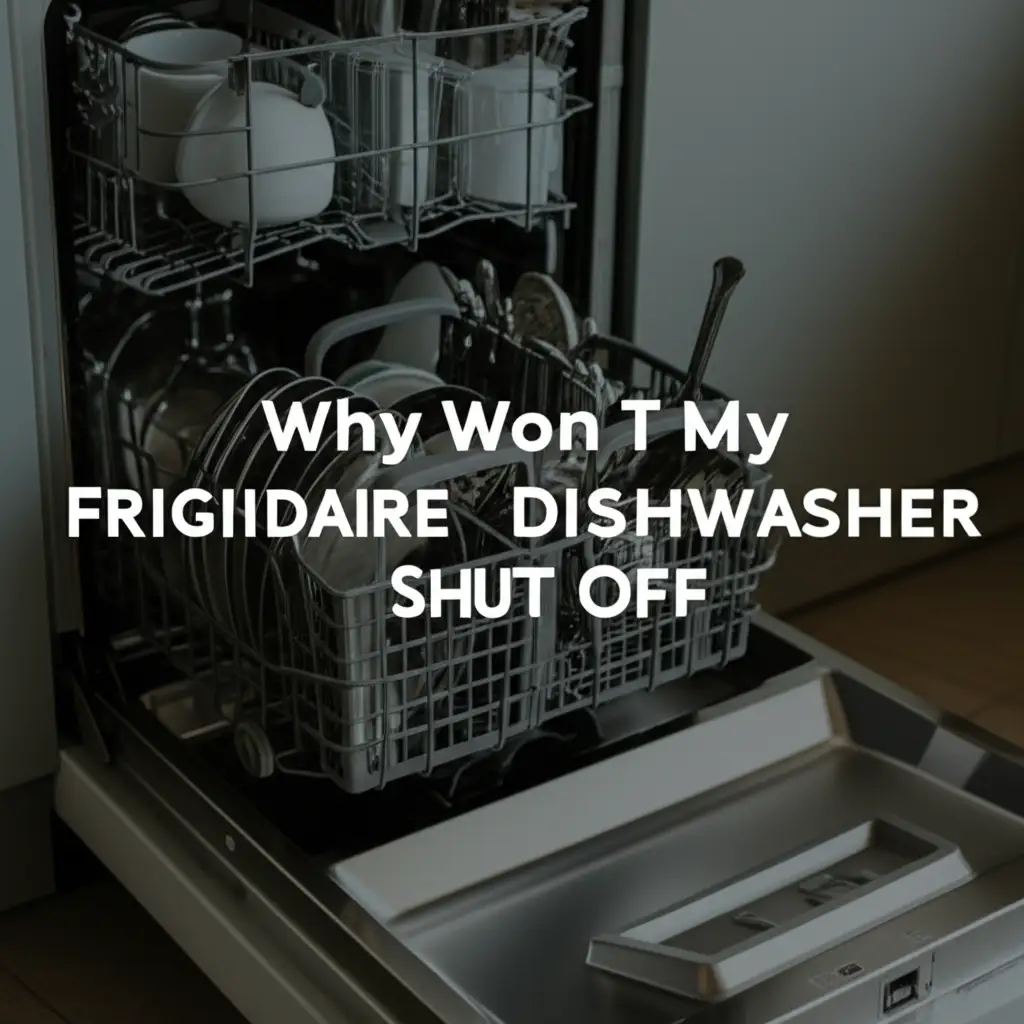· Katria Melrose · Appliance Repair · 22 min read
Why Is My Ge Washing Machine Not Draining And Spinning
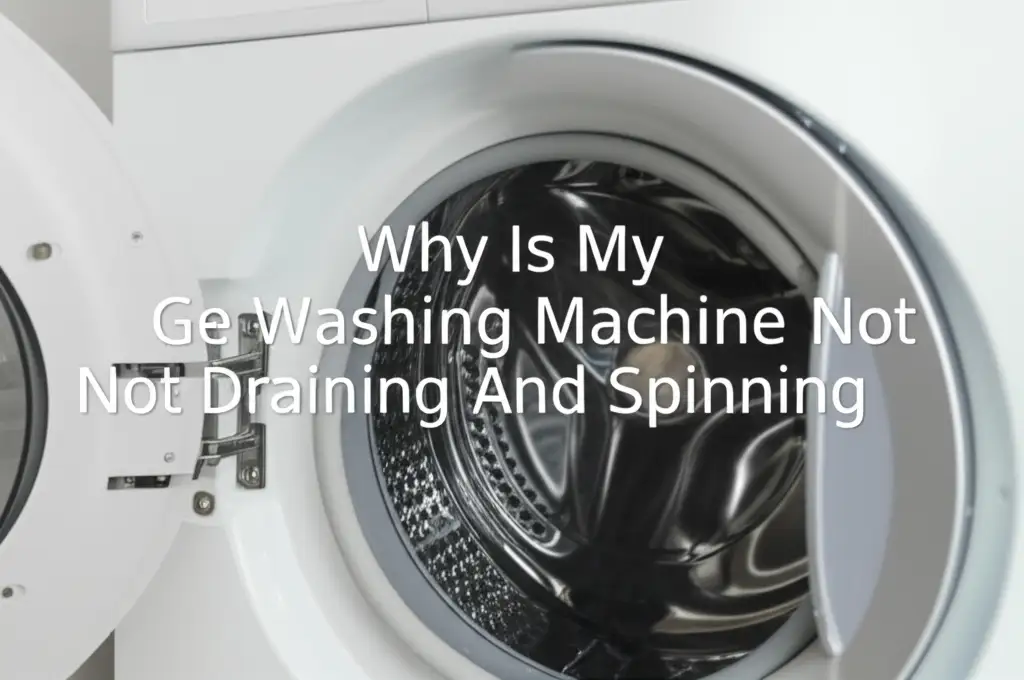
Fix Your GE Washer: Why It’s Not Draining and Spinning
You load your laundry, set the cycle, and return later to a tub full of soggy clothes. Your GE washing machine is not draining and spinning. This can be a frustrating problem. It stops your laundry day cold. I understand this common issue. Many GE washer owners face it.
This guide will help you understand why your GE washer might fail to drain and spin. We will cover the most common culprits. These include clogged pumps, faulty components, and improper usage. We will also provide clear, step-by-step troubleshooting tips. My goal is to help you identify the problem. Then, you can decide if a DIY fix is possible or if you need professional help. Let’s get your laundry routine back on track.
Takeaway
If your GE washing machine is not draining and spinning, follow these steps:
- Check the drain hose for kinks or clogs.
- Inspect and clean the drain pump filter.
- Verify the lid switch or door latch functions properly.
- Ensure the load is balanced and not too heavy.
- Look for error codes on the display.
- Consider issues with the drain pump, motor, or drive belt.
Your GE washing machine is not draining and spinning, usually due to a blockage in the drain system, a faulty component like the drain pump or lid switch, or an unbalanced load. Addressing these issues often restores normal operation.
Understanding the Drain and Spin Cycle
The drain and spin cycle is crucial for clean laundry. First, the washing machine removes all the water. This is the draining part. Then, the drum spins at high speed. This extracts remaining water from your clothes. Both steps are vital. They ensure clothes come out damp, not soaking wet. If either step fails, clothes stay wet.
A problem in one part often affects the other. For example, if water cannot drain, the machine will not spin. It prevents potential damage. Modern GE washing machines have safety features. They stop the spin cycle if conditions are not right. This protects the machine from harm. Knowing how this cycle works helps you troubleshoot.
Common Culprits: Clogged Drain Hose or Pump Filter
A clogged drain hose or pump filter is a very common reason for drainage problems. Lint, small items, and detergent residue build up over time. This blockage stops water from leaving the machine. The washer cannot drain properly. Because it cannot drain, it also cannot spin.
Inspecting the Drain Hose
Your washer’s drain hose connects the machine to a standpipe or utility sink. This hose can become kinked. It might also have an obstruction inside. Check the hose first.
- Look for Kinks: Pull the washer out from the wall. Inspect the entire length of the drain hose. Straighten any bends or kinks. Ensure it has a gentle curve.
- Check for Blockages: Disconnect the hose from the standpipe or wall drain. You might need pliers. Look inside the hose for blockages. Use a flashlight if needed. You can also try to push water through it. If water does not flow freely, there is a clog. Clear it with a long brush or snake.
Remember to place a bucket under the hose when disconnecting it. Some water will likely spill out. Clearing the hose is a simple step. It often solves the problem quickly.
Cleaning the Drain Pump Filter
Many GE washing machines have a drain pump filter. This filter catches lint, coins, and other small items. If it gets too dirty, it blocks water flow. You need to clean this filter regularly.
- Locate the Filter: The filter is usually near the bottom front of the washing machine. It might be behind a small access panel. Refer to your GE owner’s manual for its exact location.
- Drain Residual Water: Before opening the filter, you must drain any remaining water. Most models have a small drain hose next to the filter cap. Place a shallow pan or towel underneath. Pull out the hose and remove its plug. Let the water drain out.
- Remove and Clean Filter: Once water is drained, unscrew the filter cap. Pull out the filter. You will likely find lint, hair, and maybe some coins. Rinse the filter under running water. Use an old toothbrush to scrub away stubborn grime.
- Reassemble: Replace the clean filter and screw the cap back on tightly. Push the small drain hose back into its holder. Close the access panel.
Cleaning the drain pump filter is vital. It is a key part of your GE washer’s maintenance. I always recommend checking this filter first. It is often the simplest fix. For more detailed instructions on cleaning your washing machine’s filter, you can refer to this guide on how to clean a washing machine filter. This step often resolves common drainage issues.
Understanding Lid Switch or Door Latch Malfunctions
The lid switch (for top-loaders) or door latch (for front-loaders) is a safety device. It prevents the washing machine from spinning when the lid or door is open. If this component fails, the washer thinks the door is open. It will not drain or spin. This is a safety measure. It protects you from moving parts.
How to Check the Lid Switch (Top-Loaders)
Top-loading GE washers have a lid switch. It is usually located under the main top, near the lid opening. When you close the lid, a small tab on the lid presses down on the switch. This completes an electrical circuit.
- Listen for a Click: Open and close the washer lid. You should hear a click as the lid engages the switch. If you hear no click, the switch might be broken.
- Inspect for Damage: Look at the lid tab and the switch mechanism. Is anything broken or bent? A bent tab might not press the switch correctly.
- Bypass Test (Caution Advised): For a quick test, you can sometimes manually depress the switch plunger with your finger or a small object. Close the lid and try to start a drain/spin cycle. If it works, the switch itself or the lid tab is the problem. Always exercise caution when testing with the machine powered on.
Replacing a faulty lid switch is a common DIY repair. You can usually find replacement parts online. It usually involves removing the washer’s control panel or cabinet. Many online videos show this process.
How to Check the Door Latch (Front-Loaders)
Front-loading GE washers have a door latch assembly. This locks the door during cycles. It also contains a switch that signals the washer the door is closed. If this latch is faulty, the washer will not spin.
- Check for Firm Closure: Try to open the door after starting a cycle. If it opens easily, the latch is not engaging. The latch might be broken.
- Visual Inspection: Look at the latch mechanism on the door and the strike on the washer frame. Is anything misaligned, broken, or cracked?
- Error Codes: A faulty door latch often triggers an error code on the display. Check your manual for specific codes.
- Door Gasket Issues: Sometimes, a worn or dirty door gasket can prevent the door from sealing properly. This might stop the latch from engaging. Clean the gasket. Inspect it for tears or damage.
If the door latch is broken, it usually needs replacement. This can be more involved than a lid switch replacement. It may require disassembling the front panel of the washer. A broken door latch is a common reason for a washing machine not spinning or draining. For comparison, similar issues can occur with other brands, like when an LG washing machine is not rinsing and spinning.
Unbalanced Load and Overloading the Washer
An unbalanced load or an overloaded washer often causes spinning issues. Your GE washing machine has sensors. These detect if the load is uneven. If the load is too lopsided, the washer will stop spinning. It does this to prevent damage.
How Unbalanced Loads Affect Spinning
During the spin cycle, the washer drum rotates at high speeds. If clothes are grouped on one side, it creates an imbalance. This can cause severe vibrations. The washer’s control board detects these vibrations. It then pauses or stops the spin cycle. This is a safety feature. It protects the machine’s suspension and motor.
- Redistribute the Load: Open the washer lid or door. Rearrange the clothes. Try to distribute them evenly around the agitator or drum.
- Add or Remove Items: If you have only a few heavy items, add a towel or two. This helps balance the load. If the load is too small, it might also become unbalanced. If the load is too large, remove some items.
- Test Again: Close the lid or door. Resume the spin cycle. The washer should now spin correctly.
I have often found this to be the simplest fix. Sometimes, a single heavy blanket or a few jeans can cause an imbalance. This is why the washer is not draining and spinning.
Consequences of Overloading Your GE Washer
Overloading your GE washing machine creates several problems. First, it makes balancing very difficult. Too many clothes prevent proper water circulation. This affects rinsing and spinning efficiency.
- Reduced Cleaning Performance: Clothes do not get enough agitation. Detergent may not rinse out properly.
- Drainage Issues: Too many clothes absorb excessive water. This makes it harder for the pump to drain all the water. The machine might struggle to remove it.
- Spin Cycle Failure: A very heavy, water-logged load puts immense strain on the motor and suspension. The machine might refuse to spin. It could also vibrate excessively.
- Component Wear: Persistent overloading strains the motor, transmission, and drive belt. This leads to premature wear.
Always follow your GE washer’s capacity guidelines. Do not pack the drum tightly. Leave enough space for clothes to move freely. Proper loading extends the life of your appliance. It also ensures clothes get clean and properly spun.
Investigating Drain Pump and Motor Issues
If your GE washing machine is not draining and spinning and the simpler fixes do not work, the problem might be with the drain pump or the main motor. These components are essential for the washer’s operation. A failure in either can halt your laundry cycle.
Diagnosing a Faulty Drain Pump
The drain pump is responsible for expelling water from the wash tub. If it fails, water cannot leave. Consequently, the washer cannot spin.
- Listen for the Pump: During the drain cycle, listen for the pump’s hum. If you hear nothing, or if you hear grinding noises, the pump might be failing.
- Check for Obstructions: Even after cleaning the filter, objects can get past and lodge in the pump impeller. You might need to access the pump directly. Unplug the washer first. Tilt it back or lay it down to access the pump, which is typically at the bottom.
- Test Pump Power: A multimeter can test if the pump receives power. If it gets power but does not run, the pump itself is faulty. If it gets no power, the issue might be the control board or wiring.
- Replace the Pump: If the pump is confirmed faulty, it needs replacement. This is a moderate DIY repair. It involves disconnecting hoses and electrical connectors. You can often find tutorials online for your specific GE model.
A faulty drain pump is a common issue that stops a washing machine from draining. This also prevents spinning. Sometimes, a pump can be partially clogged. It might make a noise but not effectively drain water.
Problems with the Main Drive Motor
The main drive motor powers both agitation and spinning. If the motor fails, or if there’s a problem with its power supply, the washer won’t spin.
- No Agitation or Spin: If the washer fills with water but does not agitate or spin at all, the motor is a likely culprit.
- Burning Smell: A burning smell during operation can indicate a motor overheating or having internal short circuits.
- Error Codes: Motor issues often trigger specific error codes on the GE washer’s display. Consult your owner’s manual for these codes.
- Motor Coupler (Direct Drive Models): Some GE washers use a motor coupler to connect the motor to the transmission. This plastic or rubber part can wear out or break. If it breaks, the motor runs, but the tub does not spin. Check for plastic shavings under the washer. This is a common failure point for older direct-drive GE models.
- Drive Belt (Belt Drive Models): Other models use a drive belt. If the belt is broken, loose, or worn, the motor will turn but not spin the drum. Inspect the belt for damage or proper tension. A broken belt means the motor spins freely, but the drum stays still.
Replacing a motor or motor coupler/drive belt is a more advanced repair. It might require special tools. If you are not comfortable with electrical components or significant disassembly, it is best to call a professional. For those interested in deeper DIY appliance repairs, resources like Do It Yourself Washing Machine can offer broader guidance. Also, if you suspect transmission issues related to the motor, you might find more information on how to tell if a GE washing machine transmission is bad.
Faulty Water Level Sensor or Pressure Switch
A washing machine’s water level sensor (also known as a pressure switch) tells the control board how much water is in the tub. This sensor is crucial. It ensures the washer fills with the correct amount of water. It also tells the machine when the water has drained. If this sensor fails, the washer might think there is still water in the tub. Even if the tub is empty, it will not spin.
How the Sensor Works
The water level sensor typically connects to a small air trap at the bottom of the wash tub via a pressure hose. As water fills the tub, it traps air in this hose. The air pressure increases. The sensor detects this pressure. It then sends a signal to the control board. When the water drains, the pressure drops. The sensor signals the board that the tub is empty.
Diagnosing a Faulty Sensor
- Washer Overfills or Underfills: If the washer consistently overfills or underfills, the sensor might be faulty. This could also be a symptom of a failed water inlet valve. However, if it impacts draining or spinning, the sensor is more likely.
- Washer Does Not Spin When Empty: If the tub is clearly empty, but the washer still refuses to spin, the sensor might be stuck in the “full” position.
- Check the Air Hose: Disconnect the thin air hose from the pressure switch. Blow through it gently. You should hear bubbles in the tub. If you hear nothing, the hose might be clogged. Clear any blockages. The hose should be free of kinks or holes.
- Test the Switch (Advanced): Using a multimeter, you can test the continuity of the pressure switch. This requires knowledge of electrical testing. Consult your GE service manual for specific test procedures.
- Error Codes: A malfunctioning water level sensor may trigger an error code. Check your owner’s manual for relevant codes.
If the water level sensor is faulty, it needs replacement. This usually involves accessing the control panel or top of the washer. The sensor is typically a small, round or rectangular component with an attached hose. Replacing it is generally a straightforward DIY task. This issue often results in the washer not draining or spinning, even if other components are fine.
Electronic Control Board Problems
The electronic control board is the “brain” of your GE washing machine. It controls all functions. This includes water intake, agitation, draining, and spinning. If this board malfunctions, it can send incorrect signals. It might fail to send any signals. This can prevent the washer from draining or spinning.
Signs of a Failing Control Board
- Random Malfunctions: The washer might behave erratically. It might stop mid-cycle. It might not respond to commands. It could fail to drain or spin without any clear mechanical cause.
- No Power to Components: If the drain pump, motor, or other components are not receiving power, even though they are good, the control board might be failing.
- Blank Display: The display panel might be blank. Buttons might not respond. This indicates a power issue or a complete board failure.
- Intermittent Issues: The problem might come and go. Sometimes the washer drains and spins fine, other times it does not. This is a classic sign of an intermittent electrical fault on the board.
- Error Codes: Many control board failures trigger specific error codes. These codes can point directly to a board issue.
Troubleshooting and Replacement
- Reset the Washer: First, try a hard reset. Unplug the washer from the wall outlet for 5-10 minutes. Then plug it back in. This can sometimes reset the board and clear minor glitches.
- Check Wiring: Visually inspect all wiring connections to the control board. Look for loose or corroded wires. Ensure all harnesses are securely plugged in.
- Professional Diagnosis: Diagnosing a faulty control board often requires advanced electrical testing. It is best left to a professional appliance technician. They have specialized tools. They can accurately determine if the board is the issue.
- Replacement: If the control board is faulty, it usually needs replacement. This is an expensive part. Replacing it can be complex. It is generally not a DIY task unless you have strong electrical experience.
A faulty control board is a serious problem. It impacts multiple functions. If your GE washing machine is not draining and spinning, and you have ruled out simpler issues, the control board might be the cause.
Drive Belt or Motor Coupler Issues
Some GE washing machines use a drive belt to transfer power from the motor to the transmission. Others use a motor coupler for direct drive systems. Both are critical for the spin cycle. A failure in either can stop the drum from spinning.
Diagnosing Drive Belt Problems (Belt Drive Models)
The drive belt is a thick rubber band. It wraps around the motor pulley and the transmission pulley. Over time, belts can wear out. They can stretch, crack, or break.
- No Spin, Motor Hums: If you hear the motor hum, but the tub does not spin at all, the belt might be broken. The motor is running, but no power reaches the drum.
- Burning Rubber Smell: A worn or slipping belt can generate friction. This can cause a burning rubber smell.
- Visual Inspection: Unplug the washer. You will need to remove the back panel or tilt the washer to access the motor and transmission. Look at the belt. Is it snapped? Is it loose? Is it frayed?
- Proper Tension: A good belt should be taut. It should have a small amount of play. If it feels very loose, it might be stretched.
Replacing a drive belt is a relatively straightforward DIY repair. It involves removing the old belt and stretching the new one over the pulleys. Make sure you get the correct belt for your GE model.
Diagnosing Motor Coupler Problems (Direct Drive Models)
Many older GE top-load washers use a motor coupler. This small, rubber or plastic part connects the drive motor shaft directly to the transmission input shaft. It acts as a shock absorber. It also breaks if the motor or transmission seizes, protecting more expensive parts.
- Motor Hums, Tub Does Not Agitate or Spin: Similar to a broken belt, if the motor runs but the tub does not move, the coupler might be broken.
- Plastic Shavings: You might find small black or white plastic pieces on the floor under the washer. These are often fragments of a broken coupler.
- Visual Inspection: Unplug the washer. Tilt the washer back to access the motor and transmission. The motor coupler is usually located between the motor and the transmission. Look for cracks or a complete break.
Replacing a motor coupler is also a common DIY repair. It usually involves removing the motor from its mounting bolts, separating the motor from the transmission, and replacing the two coupler halves and the rubber insert. This is a less complex repair than replacing a transmission. If your GE washing machine is not draining and spinning, and you suspect the transmission, how to tell if a GE washing machine transmission is bad can provide more in-depth diagnosis.
Suspension System and Shock Absorber Issues
The suspension system holds the wash tub in place. It absorbs vibrations during the spin cycle. This system includes springs and shock absorbers (dampers). If these components fail, the tub can become unstable. This causes severe vibration. The washer’s sensors detect this. They will stop the spin cycle to prevent damage.
Signs of Suspension Problems
- Excessive Vibrations: The most obvious sign is severe shaking or thumping during the spin cycle. The washer might move across the floor.
- Loud Noises: Grinding, clunking, or squeaking noises during spinning.
- Washer Stopping Mid-Spin: The machine might start to spin, then stop abruptly. It tries to rebalance the load but fails.
- Error Codes: Some GE models display error codes related to load imbalance or excessive vibration.
Inspecting Suspension Components
- Open the Cabinet: Unplug the washer. You will need to remove the outer cabinet panels. This varies by model.
- Check Springs: Look at the four suspension rods or springs. These hold the tub assembly. Are any broken, unhooked, or stretched?
- Inspect Shock Absorbers/Dampers: Front-load washers often have shock absorbers. These look like car shocks. Check for leaks, bends, or damage. They should offer resistance when compressed.
- Damper Pads (Top-Loaders): Some top-loaders use rubber damper pads at the bottom of the tub. If these are worn, the tub can wobble.
Replacing suspension components is a moderately difficult DIY repair. It often requires removing the wash tub. If only one component is bad, it is often best to replace all of them. This ensures even support. A proper suspension system is vital for efficient spinning. Without it, your GE washing machine will not drain and spin effectively.
Troubleshooting Error Codes
Modern GE washing machines often display error codes. These codes appear on the digital display. They provide valuable clues about what is wrong. When your GE washing machine is not draining and spinning, an error code can point you directly to the issue.
How to Use Error Codes
- Consult Your Manual: The first step is always to check your GE washer’s owner’s manual. The manual lists all error codes. It explains what each code means. It also provides basic troubleshooting steps.
- Common Drain/Spin Codes:
- “dE” or “dr”: Often indicates a door error (door not closed or latch faulty).
- “E2” or “F9”: Can relate to drainage issues or pump problems.
- “unb” or “UL”: Indicates an unbalanced load.
- “LE”: Often refers to a locked motor or a motor issue.
- “tE”: Can relate to temperature sensor issues, which might indirectly affect cycle progression.
- Record the Code: Note down the exact error code. This is important for troubleshooting.
- Reset the Washer: Sometimes, an error code is a temporary glitch. Unplugging the washer for 5-10 minutes can reset the system. This might clear the code and restore function.
- Search Online: If you cannot find your manual, search online for “GE washer [your model number] error code [the code you see].” Many resources are available.
Understanding error codes saves time. It helps avoid unnecessary repairs. If the code points to a specific component, you can focus your troubleshooting there. However, remember that some codes can have multiple potential causes. A single code might suggest several possible problems. Always confirm the component’s failure before replacing it.
When to Call a Professional
While many GE washing machine issues can be fixed with DIY effort, some problems require professional help. Knowing when to call a technician saves time, frustration, and potential further damage.
Signs You Need Professional Help
- Complex Electrical Issues: Problems with the main control board, motor control board, or complex wiring should be handled by a professional. These involve high voltage. Improper handling can be dangerous.
- Specialized Tools Required: Some repairs need specific tools. If you do not have them, or they are very expensive for a one-time use, a technician is a better choice.
- Internal Component Replacement: Replacing transmissions, major motor components, or major tub bearings is complex. These often require significant disassembly. It is easy to damage other parts.
- Lack of Experience or Comfort: If you are not comfortable with appliance repair, or if you feel unsure about a step, do not proceed. It is okay to call for help.
- Persistent Issues: If you have tried all the common troubleshooting steps and the problem persists, a professional diagnosis is necessary. There might be an underlying issue you missed.
- Warranty: If your GE washing machine is still under warranty, performing DIY repairs might void it. Check your warranty terms before attempting repairs. Calling a GE-authorized technician is usually the best course of action.
A professional technician can quickly diagnose the problem. They have experience with many models. They carry common replacement parts. While there is a cost, it can prevent further damage. It also ensures the repair is done correctly.
Maintaining Your GE Washing Machine for Longevity
Regular maintenance helps prevent many common washer problems. This includes issues like your GE washing machine not draining and spinning. A well-maintained appliance lasts longer. It performs better.
Essential Maintenance Tips
- Clean the Drain Pump Filter Regularly: As discussed, this is crucial. Clean it every few months. More often if you have pets or do very linty loads.
- Inspect and Clean the Drain Hose: Periodically check for kinks. Ensure the hose connection is clear.
- Clean the Washer Interior: Residue from detergent and fabric softener builds up inside the tub. This can cause odors and affect performance.
- Run a hot cycle with white vinegar or a washer cleaning product. This helps remove build-up. For more tips, refer to how to clean your washing machine inside.
- For GE-specific cleaning tips, check out how to clean a GE washing machine.
- If you have a top-loader without an agitator, specific methods apply; see how to clean a GE washing machine top loader no agitator.
- Balance Your Loads: Avoid overloading. Distribute clothes evenly. This reduces stress on the motor and suspension.
- Check Hoses for Leaks and Cracks: Inspect inlet and drain hoses periodically. Look for signs of wear, cracks, or bulges. Replace them if necessary.
- Wipe Down the Door Gasket (Front-Loaders): Clean the rubber gasket around the door. Wipe away moisture and debris after each use. This prevents mold and mildew. This also ensures a proper seal. For information on related issues, you might find why is my GE washing machine leaking from the bottom useful.
- Use Proper Detergent: Use high-efficiency (HE) detergent if your washer is an HE model. Using too much or the wrong type of detergent can cause excessive suds. This can interfere with draining.
Following these maintenance steps helps prevent the frustrating situation where your GE washing machine is not draining and spinning. Proactive care saves you money and extends the life of your appliance.
- GE Washing Machine Repair
- Washer Draining Issues
- Washing Machine Not Spinning
- Appliance Troubleshooting
- DIY Home Repair


